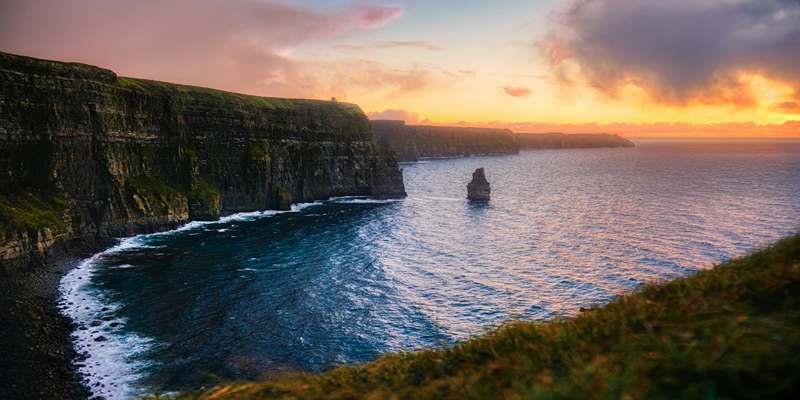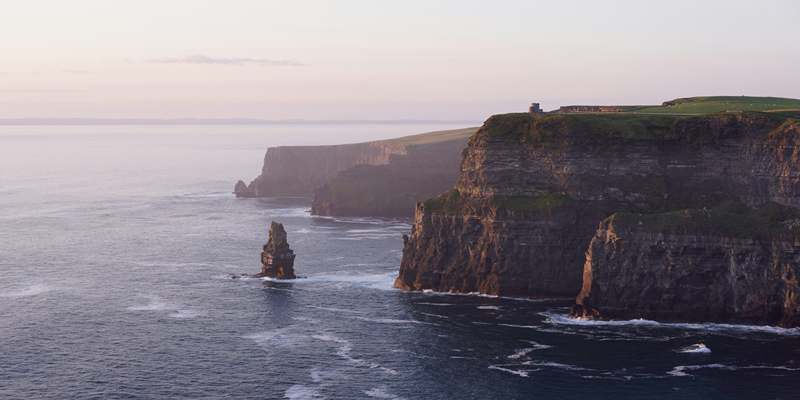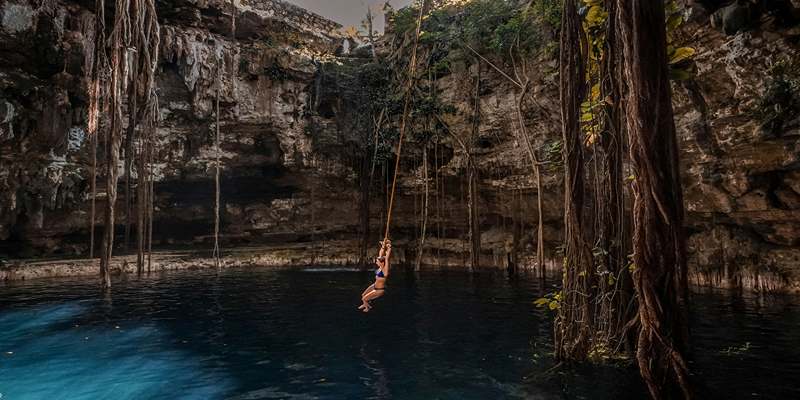The Cliffs of Moher’s impressive beauty is one of the highlights found on Ireland’s west coast. Close to the Atlantic Ocean and spanning about 14 kilometers, these sea cliffs give visitors stunning sights, an abundance of life, and abundant history. The cliffs rise well over 700 feet and make a wonderful setting for walks, pictures, and relaxing thoughts. If you’re heading to the cliffs for the first time or for the hundredth, use this travel guide to learn how to explore them right and safely. Check out scenic routes, discover what local wildlife exists, find the best periods to visit, and get other details as you arrange your trip to Ireland.

Discovering the Cliffs of Moher
History and Geological Formation
About 300 million years ago, the Cliffs of Moher were shaped during the Carboniferous period. Since they’re formed from sandstone, shale, and siltstone, the cliffs have many layers that time and weather have formed. The fort at Hag’s Head, the southern end of the Cliffs of Moher, gave us the name “Moher.” Many legends, poems, and films have come from these cliffs throughout history. What makes them important culturally and geologically also draws tourists to them. A trip here is both beautiful and informative, as you can still notice how powerful ancient natural forces helped form these rugged edges.
Wildlife and Natural Highlights
Seabirds choose the cliffs’ rugged edges to nest, which is why they are part of a Special Protection Area. You can usually spot puffins, razorbills, guillemots, and kittiwakes from April through July. Dolphins, seals, peregrine falcons, and choughs live around the island. Wildflowers and plants growing near the rocks help brighten the place. Lovers of nature and birdwatchers will truly appreciate the Cliffs of Moher. They exist together with the landscape and bring to light the lush biodiversity across Ireland by land and sea.
Key Viewing Points and Photo Spots
Several vantage points provide unforgettable views of the cliffs and ocean. O’Brien’s Tower, built in 1835, offers one of the highest viewing locations and is accessible via a short trail. From there, you can look north toward the Aran Islands and Galway Bay, or south toward Hag’s Head. Early morning or sunset hours offer the best lighting for photography, with fewer crowds. The well-maintained paths near the visitor center also provide safe yet spectacular views. For those seeking solitude, walking further along the cliff edge reveals quieter, equally breathtaking perspectives—perfect for reflective moments or capturing iconic travel photos.
Planning Your Moher Travel Experience
Getting to the Cliffs of Moher
The Cliffs of Moher are located in County Clare and can be reached by car, bus, or tour from nearby towns like Doolin, Ennis, or Galway. The drive from Galway takes about 90 minutes, and from Limerick, it’s just over an hour. Bus Éireann and private tour companies operate regular services, especially in the high season. Parking is available at the visitor center, which includes access to the main viewing area. If traveling by car, consider arriving early or late in the day to avoid congestion. Planning your route ahead of time ensures a smooth and enjoyable trip.
Best Times and Weather Conditions
The Cliffs of Moher can be visited year-round, but the most pleasant weather typically occurs from May to September. Summer months bring clearer skies, longer daylight hours, and more vibrant flora. However, this is also the busiest season. Early spring and late autumn offer quieter experiences with a chance of brisk winds and misty atmospheres that enhance the drama of the cliffs. Weather on Ireland’s coast can change quickly, so dress in layers and check forecasts before heading out.
Entry Fees and Visitor Center Info
The main entrance includes access to the visitor center, viewing platforms, restrooms, and exhibitions. As of recent updates, the entry fee for adults is approximately €10, with discounts for children, students, and families. Pre-booking online often provides reduced rates. The visitor center features interactive displays about geology, wildlife, and local folklore. There’s also a café and gift shop for refreshments and souvenirs. Visitors can explore freely once inside, with clear signage guiding routes to major landmarks.

Walking Trails and Scenic Routes
Coastal Walking Routes and Paths
The Cliffs of Moher Coastal Walk is a spectacular trail that runs approximately 20 kilometers from Doolin to Liscannor. While you don’t need to walk the entire route, segments of the trail offer serene views and fewer crowds than the central viewing area. The path is moderately challenging, with uneven terrain and cliffside exposure, so it’s best suited for reasonably fit hikers. Along the way, interpretive signs share local history and environmental facts. The trail provides a chance to see the cliffs from new angles and feel immersed in the raw beauty of Ireland’s Wild Atlantic Way.
Safety Tips for Exploring the Cliffs
Safety is essential when visiting the cliffs, especially on windy days. Stick to marked paths and avoid venturing too close to the edge, as erosion can make the ground unstable. Always wear sturdy footwear with good traction, particularly if hiking the coastal trail. Supervise children closely, and keep dogs on leashes. Weather can shift rapidly, so carry rain gear and be prepared for gusty winds. The cliffs are unfenced in many areas to preserve natural views, so personal caution is vital.
Tips for an Eco-Friendly Visit
The Cliffs of Moher are a protected natural area, and visitors play a crucial role in preserving their beauty. Avoid littering and use recycling bins at the visitor center. Stay on designated paths to minimize erosion and protect wildlife habitats. Consider supporting local businesses in nearby towns like Doolin or Liscannor to boost sustainable tourism. If you’re taking a tour, choose operators committed to eco-friendly practices. Respect for nature and local culture ensures that future generations can experience the cliffs as you do—wild, majestic, and undisturbed.
Conclusion
The Cliffs of Moher stand as a powerful symbol of Ireland’s natural beauty and cultural heritage. Their sheer heights, rich wildlife, and striking views offer a truly memorable travel experience. Whether you're walking the trails, observing seabirds, or simply watching waves crash below, the cliffs invite awe and reflection. Use this Moher travel guide to plan wisely, explore responsibly, and make the most of your journey along the Ireland coastal cliffs. With each step, you’ll not only witness nature’s grandeur but also become part of the story these cliffs continue to tell.











